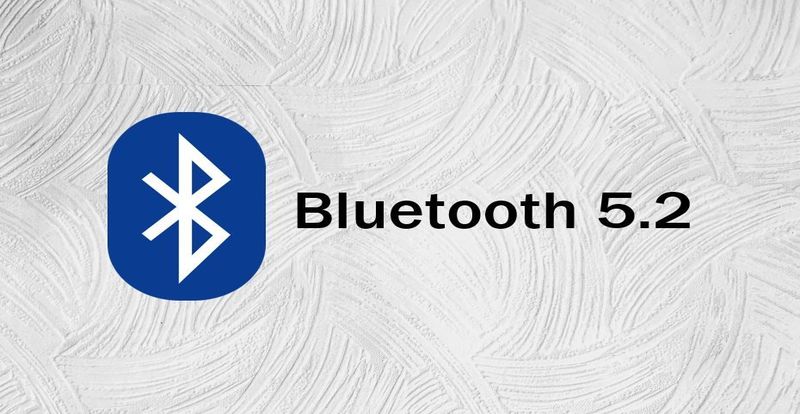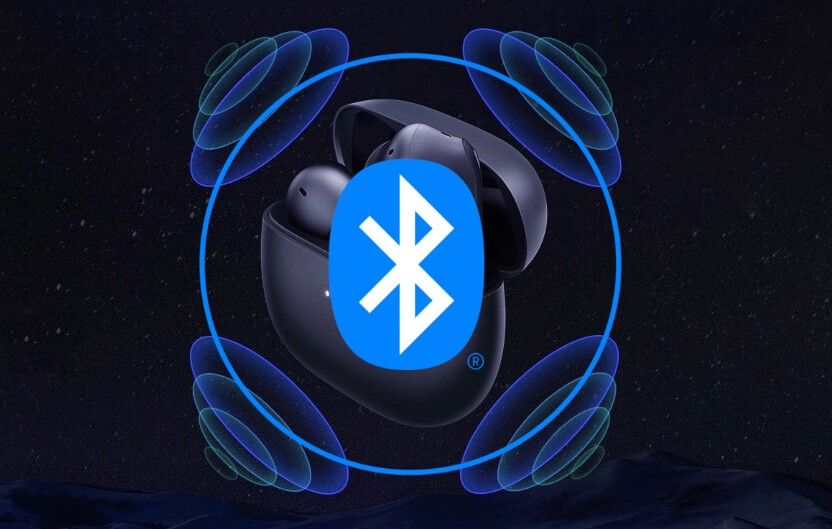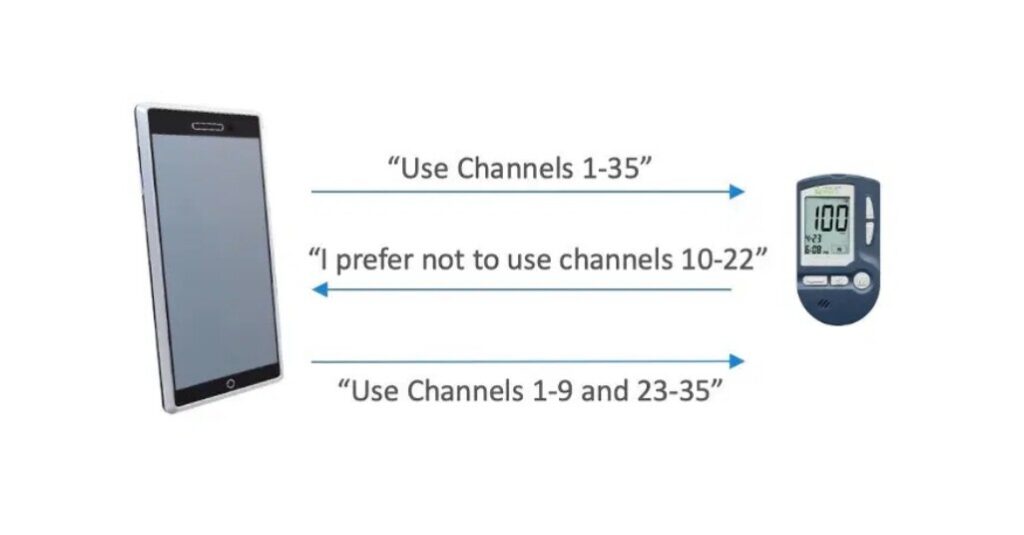We are going to explain the new features of Bluetooth 5.3 and its differences with respect to previous versions so that you can understand to what extent the new Bluetooth 5.3 innovates and improves with respect to previous versions. We will start with the list of Bluetooth versions and the new features of each one, and then we will continue with the differences and new features that version 5.3 has.
Here, you should remember two things. The first thing is that when you connect two devices via Bluetooth, the improvements and technologies of the device with a lower version are used. Therefore, by connecting a Bluetooth 5.3 cell phone to a Bluetooth 5.2 speaker, you only have the 5.2 enhancements. In addition, each new version incorporates the improvements of the previous ones, so you will not have to choose between one and the other, just look for the latest version on your future devices.
Evolution of Bluetooth version by version

We are going to start with a list in which we are going to show you all the versions that the Bluetooth protocol has had and its main new features. In this way, not only will you be able to see the different versions and their release dates, but you will also be able to assess the importance of the new features of each version in the context of how much each of them has innovated.
Bluetooth is still the reference wireless communication protocol between devices, allowing you to connect computers, smartphones, tablets, and various types of connected devices such as watches, keyboards, mice, and speakers. All this without using cables to connect them, and using a secure radio frequency in the 2.4 GHz ISM band.
- Bluetooth 1.0: This was the first version launched in 1999, and precisely because it was the first step for the technology, it had many connectivity and security problems. It is currently in disuse.
- Bluetooth 1.1: It was the first update of Bluetooth 1.0, and arrived in 2002. It is already a mature and commercial version with a transmission rate of around 721 kbps.
- Bluetooth 1.2: The second update of Bluetooth 1.0, which arrived in 2003 and reduced the interferences that still existed in version 1.1 to finish refining the technology.
- Bluetooth 2.0: The second major version of Bluetooth arrived in 2004, although compatible with 1.2. Its main feature was the introduction of the Enhanced Data Rate (EDR), which allowed it to offer a transmission rate of just over 2 Mb/s.
- Bluetooth 2.1: The next version launched in 2007, which maintained the same transmission rate as its predecessor. However, it introduced a feature that changed Bluetooth forever, the possibility that one terminal could add another, and connect automatically without the need for a PIN or anything like that.
- Bluetooth 3.0. This version arrived in 2009 and brought with it the term HS for High Speed. It meant a great improvement in the transmission rate, which could reach up to 24 Mbps.
- Bluetooth 4.0: This is possibly one of the most important versions of the standard since it began to combat the excessive battery consumption of the technology through Bluetooth Low Energy. The version arrived in 2010, maintained the transfer rate of 24 Mb/s, and, thanks to its low power consumption, began to be used in smaller and less powerful devices.
- Bluetooth 4.1: It arrived in 2013, and was characterized by targeting mainly the world of IoT (Internet of Things) by allowing connection between small devices without intermediaries.
- Bluetooth 4.2: This next update arrived in 2014, and implemented the IPv6 protocol to enable direct connection over the Internet.
- Bluetooth 5.0: In mid-2016 came the great revolution, a new step forward that doubled the transfer rate, quadrupled the range, continued with low consumption designed for the IoT, and allowed a greater amount of data in each transferred message. In terms of numbers, the transfer rate was up to 50 Mb/s, and the range was up to 240 meters.
- Bluetooth 5.1: The new version that arrived in 2019 revolved around location, allowing devices to know the location of other devices to which they are connected within centimeters. It will also be able to identify the direction from which a signal it is searching for is coming.
- Bluetooth 5.2, also known as Bluetooth LE Audio: This is a standard released in the early 2020s that improves sound quality and energy efficiency in all devices that connect for audio functions. It uses a new codec, the Low Complexity Communication Codec (LC3), which can more efficiently compress and decompress the data being transmitted, and allows audio to be transferred to multiple devices at the same time.
- Bluetooth 5.3: Announced in July 2021, although it has not become available until May 2022. This version offers lower consumption when used, less interference in connections, better security in connections, and better quality at all times, depending on the bandwidth required. Small details for further refinement.
Bluetooth 5.3 versus its predecessors

We could say that Bluetooth 5.0 is the basis of the new family of versions of this protocol. The last major update revolutionized Bluetooth 4, doubling the speed of file transfer and quadrupling the range, which is the distance over which data can be transferred between them. Since then, the rest of the versions have simply been refining small things.
Bluetooth 5.1 is focused on locating devices, allowing them to know the location of other devices to which they are connected, and to identify the direction from which their signal is coming. Meanwhile, **Bluetooth 5.2 is focused on sound, improving sound quality and energy efficiency in all devices that are connected for audio functions.
Bluetooth 5.3 is also another small step for this family of Bluetooth 5 updates, in this case, focused on further improving energy efficiency, and making connections that have less interference. It also aims to offer a higher security standard and better quality at all times, depending on the bandwidth required.
To improve performance by reducing energy consumption, this version has added a filter for updates to the periodic advertising process. This means that redundant data is eliminated in the delivery, thus saving the small peak power consumption of delivering the data.

In addition to this, the peripherals can give their list of preferred channels so that the device connected to them takes them into account and uses them over the others. This improves performance and will reduce interference in the connection, since the channels are not decided by a single device such as the mobile, but can be said to reach an agreement to use the lanes that best suit both.
In terms of security, control over the size of the encryption key is increased. This means that now the controller can set a minimum size for the key, and if you are going to connect to a device that is not too secure by using an encryption key that is too short, then the connection will not be established to protect you. In this way, consumption is also reduced, since the device only “looks” at those that meet the requirements when proposing to connect to them.
Finally, Bluetooth 5.3 allows your devices to choose modes with higher bandwidth if necessary, and with minimal delay. This means that if you are using Bluetooth in a way that suddenly requires higher bandwidth, such as switching from listening to music to making a call, this transition will be more effective.
There is also an Intelligent Dual Bluetooth feature that allows simultaneous connections to be established, both in its normal state and in BLE. This is quite an important new feature because it will allow, for example, to connect two cell phones to a single speaker via Bluetooth, as long as all three devices are using version 5.3.
Therefore, we can say that this version focuses on polishing consumption and privacy, and all this internally, so you will not need to make configuration changes or anything. However, it also includes the new Dual Smart Bluetooth feature, which can offer you an interesting new functionality.
Here, what you should know is that each new standard also offers improvements to the previous versions. This means that when buying a device you will not have to choose between the 5.2 sound or the 5.3 enhancements, just try to choose the highest Bluetooth version, as it will include all the new features that have been implemented in the previous versions.
This post may contain affiliate links, which means that I may receive a commission if you make a purchase using these links. As an Amazon Associate, I earn from qualifying purchases.

